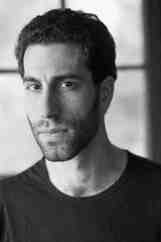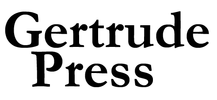Tomorrow or Forever:
“A public place for the most private of memories”
|
There’s something shadowy about Jack Kaulfus’s startling collection Tomorrow or Forever. Their title’s disjunctive “or” splits the future in two. Will it fulfill the promise “tomorrow” so often makes, or will it always be like this, “forever”? Because these stories so often deal in fusion, confusion, and refusal, radical change and stifling continuity cast their dual shades over the characters and their times — which are ours, as well. “The End of Objects” is even set between lifetimes, in a bureaucratic space that reminded me of a local middle-school’s gymnasium, its floor stretching on and on. The space keeps switching, unsettlingly, between the civic comfort of something like election day and the much bleaker feeling of an emergency shelter.
Who wouldn’t want to be reincarnated, you think, if it means escaping from such ambivalence? But these after-lifers, Mirelle and Theo, remember too clearly and know too well what taking up life again might mean. Kaulfus renders their memories tersely, precisely: “Her predecessor had chosen for Mirelle a self-loathing, speed-addled mother, a philanderer of a father, and the body of a boy. Enough food, sure. Heat in the winter. But also a surprise gun barrel in her mouth one night after drinks with friends at the most popular gay club in Syracuse” (18). So abruptly does Kaulfus introduce you to these stories’ premises and their characters’ histories that you almost miss how Mirelle shifts the responsibility for her life onto her “predecessor,” someone she never knew. If you notice, though, you don’t judge; you commiserate. You’re with Mirelle in this liminal space, choosing sweaters for her future incarnation. Your grasp of the world’s metaphysical truths remains as uncertain as hers, and her options are simultaneously comically many and shockingly few. No wonder she hesitates to choose. “Your grasp of the world’s metaphysical truths remains as uncertain as Mirelle’s, and her options are simultaneously comically many and shockingly few. No wonder she hesitates to choose.” Yet many of Kaulfus’s other characters leap courageously into their futures. Genevieve goes for the eponymous “Radical Reorganization” of another strong story, risking love, and not quite losing it. And in “Field Trip,” my favorite of the collection, a bunch of high-schoolers at a West Texas sculpture park go joyfully into a zone of prophecy. But this doesn’t mean that the future is all spelled out: the truncated narrative keeps to their teacher’s point of view, and she still has plenty to learn.
|
So do I. Handling Kaulfus’s stories, I find myself cultivating a certain forbearance in the face of their obstinate irresolution. The refusals are political and important: For example, Emmet’s refusal in “From Around Here” to put his transition at the center of the story he tells about his first girlfriend’s younger brother, Cody, highlights the power of Cody’s attempted suicide. Cody is the one drawing monsters (and fighting them), while Emmet works in the warehouse of Danny Hernandez Printing to pay for college. As narrator, Emmet gets to make the story about what he sees. Jill asks, “Were you really a boy when I met you?” (155) but Emmet’s answer doesn’t solve anyone’s puzzles.
“It’s in the kind of past that Kaulfus works and reworks like modeling clay. You learn to take it as given and real, but never fixed in its relation to the present.” Similarly, the three Thursday nights in “When it Happens” refuse to fall into sequence. Maybe they are three versions of the same night or three outcomes of the same life. Kaulfus doesn’t ask you to choose among them, but somehow to take them all in, which has the salutary effect of preventing Frankie’s assault at Dalton’s hands from defining her. It’s in the kind of past that Kaulfus works and reworks like modeling clay. You learn to take it as given and real, but never fixed in its relation to the present.
This paradoxical quality of the past tinges Kaulfus’s collection with a shade of hope — for a future full of tomorrows. Although the stories are evidently set in different worlds and times and parts of Texas, the occasional reappearance of a given name makes you suspect that some of the characters have made it from there to here and are living lives untold, perhaps untellable. To find these characters, to join them, is to launch yourself out of a confining present, to think and to feel what else may be. Tomorrow or Forever spurs you on. 
REVIEWED BY EZRA DAN FELDMAN
Ezra is the author Habitat of Stones, which won the Patricia Bibby First Book Award. He has published in RHINO, Crazyhorse, Lambda Literary, DIAGRAM, and other venues. He teaches American Literature and Science and Technology Studies at Williams College. http://ezradanfeldman.com |
